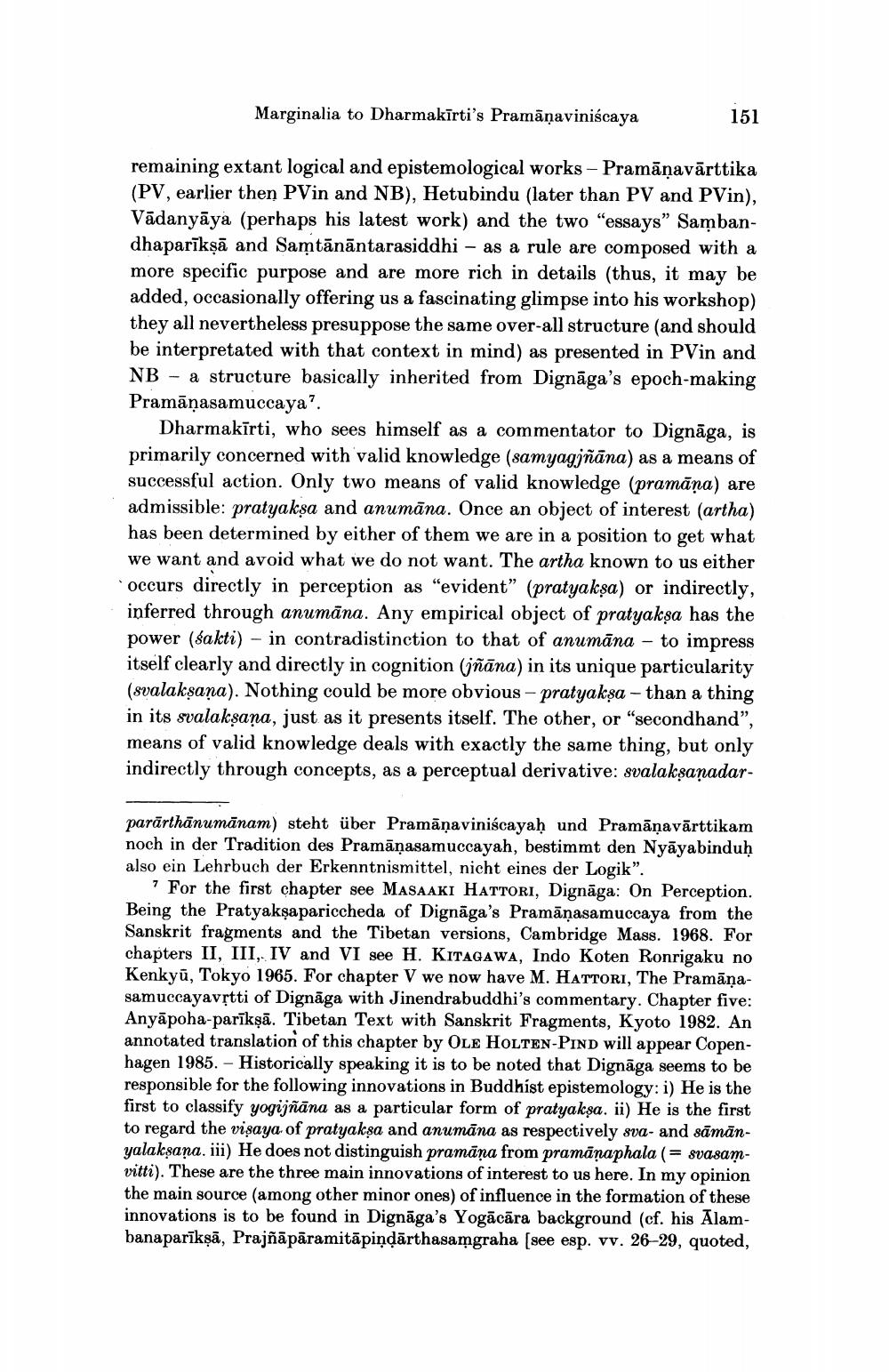Book Title: Marginalia To Dharmakirtis Pramanaviniscaya I II Author(s): Christian Lindtner Publisher: Christian Lindtner View full book textPage 3
________________ Marginalia to Dharmakīrti's Pramāņaviniscaya 151 remaining extant logical and epistemological works - Pramāņavārttika (PV, earlier then PVin and NB), Hetubindu (later than PV and PVin), Vādanyāya (perhaps his latest work) and the two “essays” Sambandhaparīkņā and Samtānāntarasiddhi – as a rule are composed with a more specific purpose and are more rich in details (thus, it may be added, occasionally offering us a fascinating glimpse into his workshop) they all nevertheless presuppose the same over-all structure (and should be interpretated with that context in mind) as presented in PVin and NB - a structure basically inherited from Dignāga's epoch-making Pramāṇasamuccaya? Dharmakīrti, who sees himself as a commentator to Dignāga, is primarily concerned with valid knowledge (samyagjñāna) as a means of successful action. Only two means of valid knowledge (pramāņa) are admissible: pratyaksa and anumāna. Once an object of interest (artha) has been determined by either of them we are in a position to get what we want and avoid what we do not want. The artha known to us either occurs directly in perception as "evident” (pratyaksa) or indirectly, inferred through anumāna. Any empirical object of pratyaksa has the power (Śakti) - in contradistinction to that of anumāna - to impress itself clearly and directly in cognition (jñāna) in its unique particularity (svalaksana). Nothing could be more obvious - pratyaksa - than a thing in its svalaksaņa, just as it presents itself. The other, or "secondhand”, means of valid knowledge deals with exactly the same thing, but only indirectly through concepts, as a perceptual derivative: svalaksanadar parārthānumānam) steht über Pramāņaviniscayaḥ und Pramāņavārttikam noch in der Tradition des Pramāṇasamuccayah, bestimmt den Nyāyabinduh also ein Lehrbuch der Erkenntnismittel, nicht eines der Logik”. For the first chapter see MASAAKI HATTORI, Dignāga: On Perception. Being the Pratyakşapariccheda of Dignāga's Pramāṇasamuccaya from the Sanskrit fragments and the Tibetan versions, Cambridge Mass. 1968. For chapters II, III, IV and VI see H. KITAGAWA, Indo Koten Ronrigaku no Kenkyū, Tokyo 1965. For chapter V we now have M. HATTORI, The Pramāņasamuccayavrtti of Dignāga with Jinendrabuddhi's commentary. Chapter five: Anyāpoha-parīkņā. Tibetan Text with Sanskrit Fragments, Kyoto 1982. An annotated translation of this chapter by OLE HOLTEN-PIND will appear Copenhagen 1985.- Historically speaking it is to be noted that Dignāga seems to be responsible for the following innovations in Buddhist epistemology: i) He is the first to classify yogijñāna as a particular form of pratyakşa. ii) He is the first to regard the visaya of pratyaksa and anumāna as respectively sva- and sāmānyalaksaņa. iii) He does not distinguish pramāna from pramānaphala ( = svasamvitti). These are the three main innovations of interest to us here. In my opinion the main source (among other minor ones) of influence in the formation of these innovations is to be found in Dignāga's Yogācāra background (cf. his Alambanaparīkņā, Prajñāpāramitāpiņdārthasamgraha (see esp. vv. 26-29, quoted,Page Navigation
1 2 3 4 5 6 7 8 9 10 11 12 13 14 15 16 17 18 19 20 21 22 23 24 25 26 27
